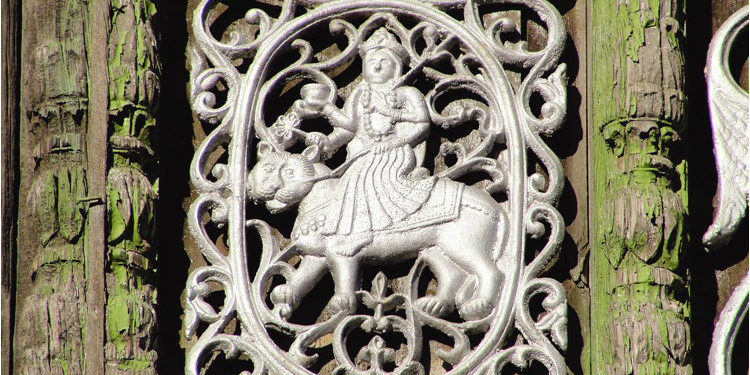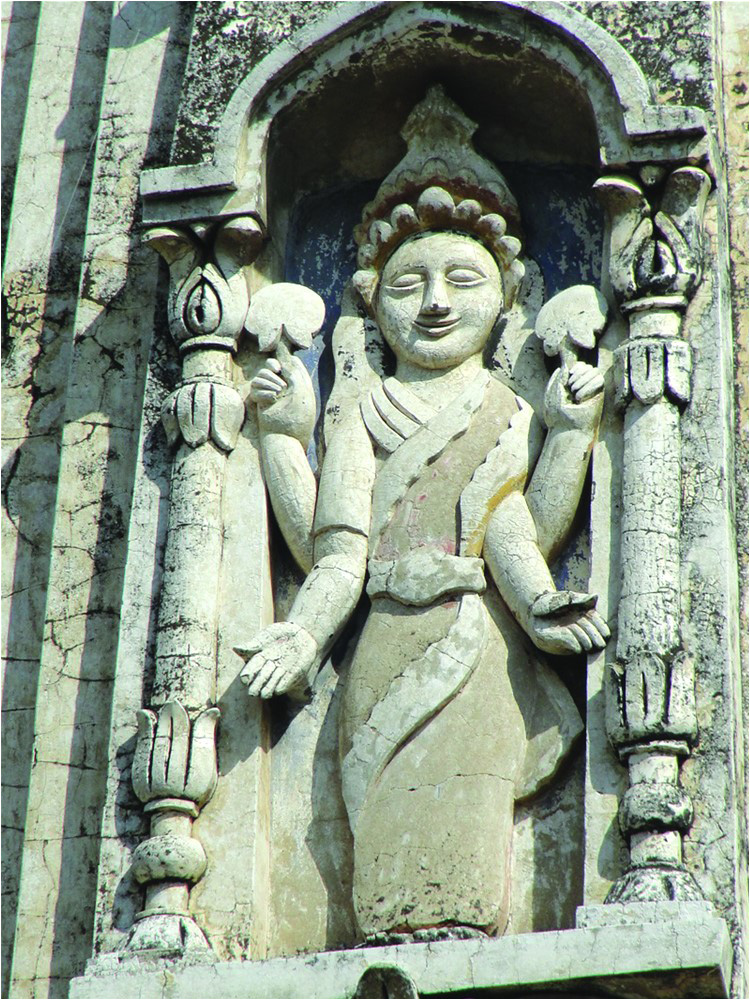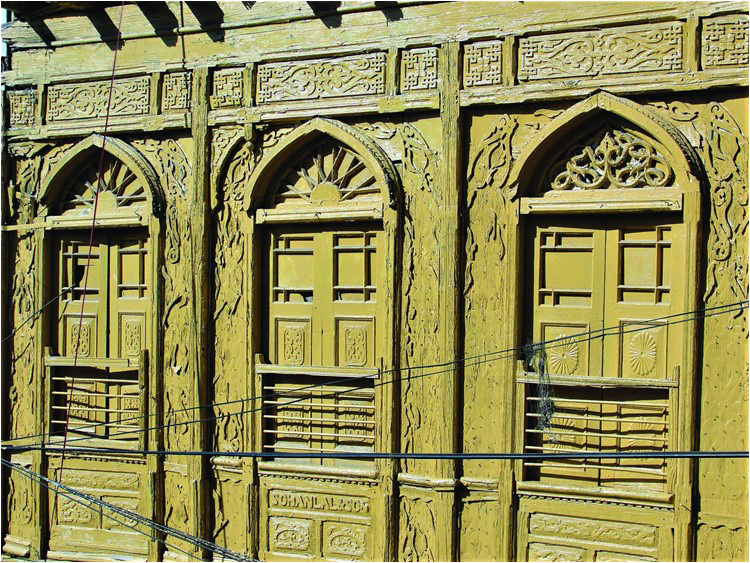
From the prehistoric to the historic period, Islamabad’s antiquity is located in its rural areas. In Rawalpindi, these historic images have never been damaged – which reflects how the people of Rawalpindi show respect for other religions.
Zulfiqar Ali Kalhoro
While traveling in the outskirts of Islamabad and environs of Rawalpindi, one comes across several historical buildings of the Muslims, Hindus and Sikhs. The landscape of Islamabad is still host to a number of such historical structures despite the mushrooming of new housing schemes. A few monuments have still survived and stand in a dilapidated condition. Some of the monuments have already been renovated to promote the cultural tourism in the city. The temple complex at Saidpur, crumbling temple at Rawal Lake, the dilapidated temple at Golra Sharif and the Sikh structure at Kuri reminds the visitor of the past of the twin cities of Islamabad and Rawalpindi.
Though it was established in 1960 as the new capital of Pakistan, Islamabad’s ancient history lies beneath the newly built structures.
From the prehistoric to the historic period, Islamabad’s antiquity is located in its rural areas. The Mughal-period structures are located in some of the villages and towns of Islamabad – prominent amog these being Emperor Akbar’s mosque at Kuri town, the caravanserai at Sarai Kharbuza and Kenthala Baoli. All these structures indicate the strategic location of Islamabad in the past when caravans stayed in caravanserais built near the G.T (Grand Trunk) road of Sher Shah Suri. The landscapes of Kirpa, Chira and Begwal villages – where temples, dharamshalas and Samadhis of Sadhus once existed – are now only preserved in the memories of the local community.

The thousand-year-old rock carvings in the heart of Islamabad city in G-10 sector at the Buland Market showcase the antiquity of Islamabad. Apart from the Buland Market, the ancient cup-marks are located in G-10 (in a green belt) G-11, G-13, D-12 and Peja village.
In fact, I would like to take this opportunity to inform any potential visitors about the remains of huge stupa (discovered by this scribe) in the very midst of G-12 (Meharabad) Sector. These remains lie on an ancient route that connected Manikayla (another Stupa site) near Rawat with Taxila. Beyond these remains of a stupa are Buddhist caves depicting traces of murals which were also used by Jain Munis and Hindu Sadhus.
The rulers of the Gakhar dynasty (1500-1799) also erected a number of structures during their reign, which are today scattered throughout the length and breadth of Potohar. During their glorious rule, they established three capitals at Pharwala, Rawat and Dhan Gali – where today one finds the formidable forts and a cluster of mosques and mausoleums. Like their male counterparts, the royal Gakhar women also contributed to architecture. It is, in fact, the Gakhar ladies who are believed to have been the financiers of a number of mosques and excavated wells. Mai Qamro, who was wife of the legendry Gakhar ruler Hathi Khan, erected a three-domed mosque at Bagh Joghian, a village that was also known for sacred spaces of the Nath jogis. This mosque is the oldest structure still standing in Islamabad. Another royal Gakhar lady, Rani Mangho, also erected an impressive palace, fortress and mosque at Dhan Gali. The remains of all three structures are still extant in Dhan Gali. This old capital of the Gakhars is located about 25 km northeast of Kallar Syedan, a town which boasts the building from the Sikh and British periods. The Krishna temple overlooking the nullah in town is the earliest structure in Kallar Syedan. Another building of historical importance is a two storey haveli of Khem Singh Bedi depicting themes from Hindu and Sikh belief systems. Kanoha and Doberan Kalan gurdwaras and Sangni fort are the last remnants of Sikh heritage in Kallar Syedan. The Sagri temples and Choubara of Ratan Singh are the landmarks of Sagri town in Rawalpindi district. Other tehsils of Rawalpindi like Gujar Khan, Taxila, Chak Beli Khan had many splendid Sikh- and Hindu-built havelis – belonging to rich merchants and nobles including. Among these is Bakhshi Ram Singh’s haveli at Kontrila, Atam Singh Gujral’s at Doultala and several others at Sukho and Narali, crumbling temples and gurdwaras at Harnal, Haryal, Beval, Gulyana and Gujar Khan towns.
The narrow streets and alleys of Kali Baari (the locality of Bengali female dancers) and especially Bhabra locality of Rawalpindi boast magnificent buildings with impressive oriel windows or jharokas, wooden balconies, ornately carved doors and temples. As such, these structures indicate the opulence and aesthetics of the Bhabra Jains.
The haveli of Rai Bhadur Sujan Singh, a most fabulous haveli from Colonial Rawalpindi in the Bhabra bazaar, is crying for renovation.

Grand gurdwaras, notably Nirankari in the Nirankari Bazaar, remind visitors of the thriving presence of a Sikh community in Rawalpindi of the past. The tall shikhars (superstructures) of the temples of Kalyan Das in Kohati Bazar, which is built in panjratana style (literally meaning five jewels, having five shikharas), Mohan Das temple in Lunda Bazaar, Shiva temple at Ganj Mandi, three neglected temples in Urdu Bazaar and the living temple of Krishna in Kabari Bazaar dominate the skyline of Rawalpindi town. The temples at Kohati bazaar and on the College Road are most splendid structures. The College Road temple has some very refined images of Hindu deities.
The melting pot of religious buildings of old Rawalpindi is located at Ahata (compound) Mithu Khan where one finds within a radius of half a kilometre a Hindu temple, a Khalsa (Sikh) building, a Jain temple, a church (built in 1926), a Jamat Khana of the Bohra community, an Imambargah of Shias and a mosque of Sunnis. Such religious diversity never led to any untoward incident in the past.
Today the Hindu, Sikh and Jain communities have left Rawalpindi. The structures built by them still stand but they have lost their original beauty. Yet there are still a few buildings proudly representing the statues of dancing girls and Hindu deities particularly those of Durga Devi. These images have never been damaged – which reflects how the people of Rawalpindi show respect for other religions. In fact, this pluralism is a point which always escapes the attention of the vibrant media of our country.
The favorite themes depicted on these buildings were the raaslila-ring or circular dance of Lord Krishna with Radha and her Sakhis (friends), Nayika depictions, and paintings of Sikh Gurus. The jharokas, balconies, bridges (which connects two buildings), the square and octagonal towers surmounting the havelis used for enjoying the evening breeze in the summers, are still extant in Rawalpindi. They provide a glimpse into the lifestyle of the past.
__________________
 Dr. Zulfiqar Ali Kalhoro is an anthropologist and has authored 12 books: ‘Symbols in Stone: The Rock Art of Sindh’, ‘Perspectives on the art and architecture of Sindh’, ‘Memorial Stones: Tharparkar’ and ‘Archaeology, Religion and Art in Sindh’. He may be contacted at: zulfi04@hotmail.com
Dr. Zulfiqar Ali Kalhoro is an anthropologist and has authored 12 books: ‘Symbols in Stone: The Rock Art of Sindh’, ‘Perspectives on the art and architecture of Sindh’, ‘Memorial Stones: Tharparkar’ and ‘Archaeology, Religion and Art in Sindh’. He may be contacted at: zulfi04@hotmail.com
Courtesy: The Friday Times Lahore